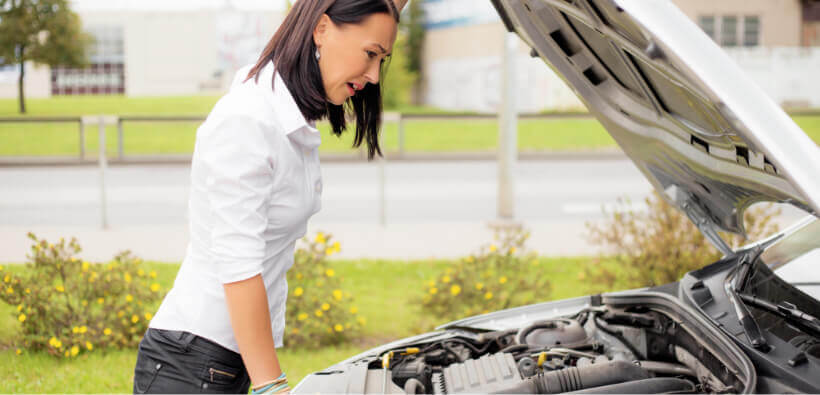Dead Battery? 12 Easy Steps to a Safe Jumpstart

If you drive a car, you‘ll more than likely, experience a dead car battery at one time or another. It’s one of those unexpected inconveniences that can make the start of a workday or a trip to the mall more eventful than you counted on. Sure, you could call the Auto Club, but they can take upwards of 45 minutes to an hour or more on busy mornings until they show up and, if you’re in a hurry, the long wait will only raise your stress level. But look on the bright side – at least it won’t affect your car insurance rates.
The quickest way to fix the situation and get you on your way is by getting a jumpstart from a Good Samaritan willing to give you a hand. Hopefully, you’re one of those people who always carries a pair of jumper cables in your car for such an occasion. Should that not be the case, you’ll just have to be more selective and find someone who carries a pair themselves.
Jumpstarting a car battery sounds simple enough, but what you don’t know could hurt you. Know-it-alls who have never done it will tell you it’s a piece of cake just before they damage your car, their car, or themselves. If you’re dealing with such a person…stand back. Trust me.
Before you begin, open your car’s hood and locate the battery. Keep in mind that batteries are not always going to be in the same place. Vehicles may have their battery on the left side of the engine compartment, while others may be on the right. In some cases, the battery could be behind the cab, or even in the trunk. Try to find a car or truck compatible to yours so the jumpstart won‘t turn into an acrobatic ordeal increasing the risks.
There are several steps to a safe and successful jumpstart. If you’re a novice, but follow the steps carefully you’ll greatly reduce the chances of something going wrong. Know-it-alls, you may want to pay attention to this.
- Bring the car with the good battery as close to the car with the dead battery without touching.
- Turn off the ignition. Make sure your ignition is off as well even with a dead battery.
- Open the hood on both cars. Make sure both batteries have the “same” voltage — 12 volts.
- Be sure the headlights, wipers, radios, and all accessories on both cars are turned off. They drain power and may keep you from having the amperage needed to get your car started and might even suffer damage from sudden surges of power.
- Unwind the jumper cables. Connect a red clamp “first” to the positive (+) post on the dead battery. Then connect the other end with the red clamp to the positive (+) post on the good battery. Warning: As you connect the clamps, Do Not cross the cables while they are attached to both posts of a car battery. Charging and discharging forms hydrogen gas which can be highly explosive under the right conditions. The resulting sparks could cause the cell to explode.
- Connect a black clamp to the negative (-) post of the good battery.
- This one is important. Connect the remaining black clamp (for the car with the dead battery) to a solid piece of unpainted, grounded metal on the dead car. Do Not Connect this clamp to the negative post of the dead battery. This should only be done as a last resort.
- Double-check your connections again to make sure all four clamps are secured to the right posts prior to continuing.
- Keep both cars in “Park” and the parking brake on. Start the car with the good battery and give it approximately five minutes of idle time before starting the other car so it can charge its own battery as well as the dead one. Be sure all cables are clear of any of the engines’ moving parts.
- As soon as you’ve given it enough time, try to start your car. If it doesn’t start up right away, just wait another five minutes for more charging, then try again. Repeat the routine until your car starts.
- Once your car is running, remove the jumper cables from the batteries in the reverse order in which you attached them. More specifically, remove the clamp from the ground of the car with the previously dead battery…black and red from the good battery… and finally the red from the formerly dead battery. Again, be careful to not cross the cables so as to not cause a spark or damage to either one of the car batteries.
- Keep the recently disabled car’s engine running a little above idle for at least twenty minutes to charge the battery. Then, go on your way.
Providing your car’s alternator is functioning properly, getting the jump will give you and your car the ability to get to the nearest auto repair center for a fresh replacement. Don’t put it off or you’ll just be repeating the same scenario over and over again.
The same can be said about your car insurance. Don’t put off checking that you’re getting the best possible rate. Why not get a free car insurance quote today?


